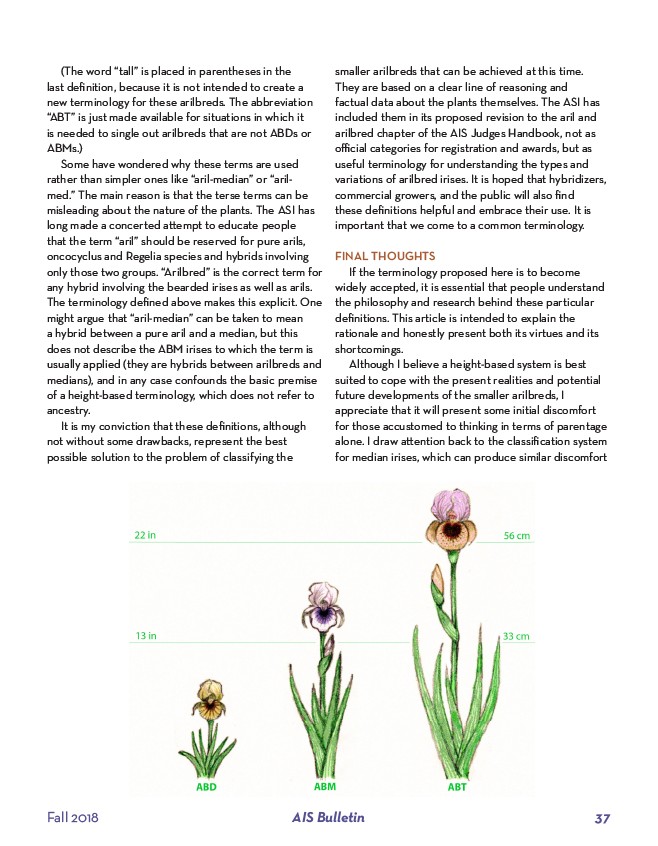
(The word “tall” is placed in parentheses in the
last definition, because it is not intended to create a
new terminology for these arilbreds. The abbreviation
“ABT” is just made available for situations in which it
is needed to single out arilbreds that are not ABDs or
ABMs.)
Some have wondered why these terms are used
rather than simpler ones like “aril-median” or “aril-med.”
The main reason is that the terse terms can be
misleading about the nature of the plants. The ASI has
long made a concerted attempt to educate people
that the term “aril” should be reserved for pure arils,
oncocyclus and Regelia species and hybrids involving
only those two groups. “Arilbred” is the correct term for
any hybrid involving the bearded irises as well as arils.
The terminology defined above makes this explicit. One
might argue that “aril-median” can be taken to mean
a hybrid between a pure aril and a median, but this
does not describe the ABM irises to which the term is
usually applied (they are hybrids between arilbreds and
medians), and in any case confounds the basic premise
of a height-based terminology, which does not refer to
ancestry.
It is my conviction that these definitions, although
not without some drawbacks, represent the best
possible solution to the problem of classifying the
smaller arilbreds that can be achieved at this time.
They are based on a clear line of reasoning and
factual data about the plants themselves. The ASI has
included them in its proposed revision to the aril and
arilbred chapter of the AIS Judges Handbook, not as
official categories for registration and awards, but as
useful terminology for understanding the types and
variations of arilbred irises. It is hoped that hybridizers,
commercial growers, and the public will also find
these definitions helpful and embrace their use. It is
important that we come to a common terminology.
FINAL THOUGHTS
If the terminology proposed here is to become
widely accepted, it is essential that people understand
the philosophy and research behind these particular
definitions. This article is intended to explain the
rationale and honestly present both its virtues and its
shortcomings.
Although I believe a height-based system is best
suited to cope with the present realities and potential
future developments of the smaller arilbreds, I
appreciate that it will present some initial discomfort
for those accustomed to thinking in terms of parentage
alone. I draw attention back to the classification system
for median irises, which can produce similar discomfort
Fall 2018 AIS Bulletin 37